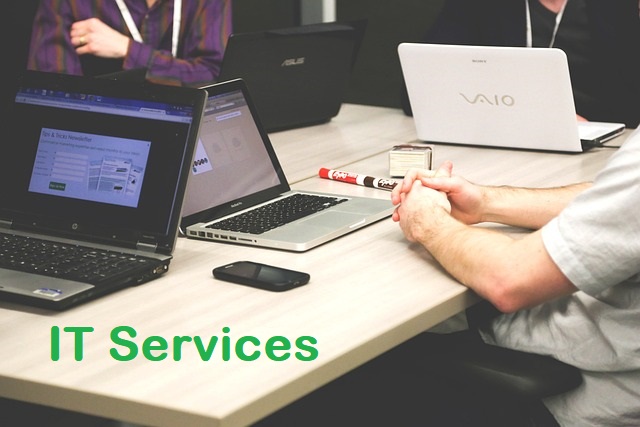Are you facing an IT problem at work? In 2023, the market for information technology was worth $8852.41 billion. All businesses are going to need IT services at some point or another. Whether you’re struggling to keep up with the demands of your technology or putting the finishing touches on your new enterprise, a reliable IT department is essential.
To cut the problems, get IT support services. There are plenty of IT service types available that can make things easier for you.
Check out everything you need to know about the different types of IT services in this guide.
1. Network Management
Network management is the process of maintaining network hardware and software. It also involves managing resources and monitoring and controlling performance. And it includes such activities as ensuring security.
It provides service continuity and improves performance and scalability. And it also means managing networks across many locations.
It includes server and storage systems, virtual machines, applications, databases, and networks.
It also involves the assessment of traffic loads and flows, network topology, and link use. So, IT Services can ensure the physical and logical security of the network with network management and monitoring.
2. Software Development
Software development allows organizations to design, develop and install the software. It must meet their specific needs. Software development uses various coding languages such as Java, C#, and HTML. Also, it uses frameworks such as .NET and AngularJS.
The development process comprises steps and stages. It includes requirements gathering, software design, development, testing, and deployment.
During software development, developers create applications. These are web and mobile applications that meet organizations’ needs. These applications often involve a combination of coding and design elements. They allow developers to create complex experiences for users.
Once they develop a product, they test it to ensure it meets the goals and requirements. After the software passes testing, they then release it to the customer.
3. Database Management
Database management involves setting up, maintaining, and updating a database. This type of IT service helps to keep the data in an organized and retrievable form. It allows users to access the data quickly and efficiently.
Database management ensures the security and integrity of the data. It also helps organizations to make the data available for reporting, analysis, and decision-making.
Database management also involves backup and recovery plans. Organizations need to have access to their data in the event of a disruption.
4. Web Development and Hosting
Web development encompasses the creation of web-based content. It consists of websites, applications, and tools. It also includes the creation of scripts, graphics, and other design elements.
They help users navigate the site and make it pleasing. Hosting involves taking a web host’s server and storing all its website information. It can include database information, user information, multimedia, and more.
The hosting provider provides the bandwidth, storage, and access to maintain the website. Together, these services help businesses and individuals. They make the most of their online presence and increase their online presence.
5. Cloud Computing
Cloud computing provides shared computing resources over the internet. It allows users to access their data and applications from any device with an internet connection. They make it easier to stay connected with the rest of their team, even when working remotely.
Cloud computing improves efficiency by allowing users to share resources like storage and processing power on robust, global networks.
It also reduces the cost associated with hardware, software, and other IT-related investments since cloud services are typically provided as monthly subscriptions.
The cloud is also reliable and secure. It allows users to trust their data with renowned cloud service providers.
6. Network Security
Network security involves the implementation of secure systems and technologies. It ensures that networked systems, data, and resources are safe from unauthorized access.
It includes the use of firewalls, encryption, and anti-virus. Also, it provides anti-spam software and implements access controls. Also, it includes monitoring and identification of malicious activity and threats.
Network security provides corrective steps for minimizing risk. It aims to protect the network from external threats. These are hackers, malware, and internal threats, such as system and user errors.
Network administrators may have policies in place. It dictates user access and acceptable use of the network and techniques. It is to protect the network from harm and the steps necessary to restore the network to a secure configuration in the event of an attack.
7. System Maintenance
System maintenance is an essential IT guide and service for keeping systems running smoothly. It refers to several tasks, from routine care and maintenance to troubleshooting and complex system upgrades. These tasks are critical for optimal performance and protection of data.
System maintenance also involves taking proactive measures, such as monitoring server logs. It offers to install an operating system, application patches, and keep systems up to date.
It also involves routine tasks, such as reviewing security settings and ensuring the proper hardware and software are installed on the system. And the installation and configuration of anti-virus and anti-malware software.
System maintenance is an essential component of any business’s IT strategy. It helps to prevent downtime and protect critical data.
8. IT Consulting
IT Consulting is a type of IT service that focuses on helping organizations make the most efficient use of their existing technology. And it can range from providing IT infrastructure advice and help. It creates and implements custom application systems or even designs entire networks.
An IT Consultant is an expert in helping organizations improve the performance and use of their advanced technology. They will review and analyze the current technology and processes.
It gains an understanding of any problems that need to be addressed. They can suggest strategies and technologies used to improve IT systems.
They will also work with other departments to meet the organization’s functional needs. You may contact them depending on the size and scope of IT Consulting projects. They handle the installation, maintenance, and security of IT infrastructure.
Invest in These Types of It Services Today
IT Services are essential for organizations to get the most out of their technological investments. There is a wide range of types of IT services. They ensure businesses and organizations, large and small, can take advantage of the full potential of their technology.
Choose network management, software development, and web development and hosting. Also, you can choose cloud computing, network security, system maintenance, and IT consulting.
Be knowledgeable with this IT service guide. Contact a reliable and experienced IT provider today.







